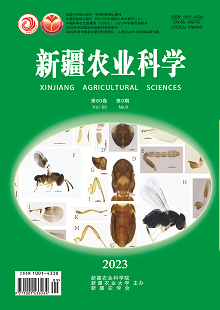【Objective】 To reveal the differences in the accumulation, transport and utilization of dry matter and nitrogen in winter wheat at different yield levels, and to provide a theoretical basis for reducing the yield difference and high-yielding cultivation of winter wheat in Xinjiang.【Methods】 The experiment was carried out in military households in Changji from 2018 to 2020 with Xindong 41 as the test material, and referring to the production practice in Xinjiang, different fertilization and cultivation management measures were used to simulate high yield I (SH: ≥9,000 kg/hm2), high-yield Ⅱ (HH: 7,500 kg/hm2~9,000 kg/hm2), farmers (FP: 6,000 kg/hm2~7,500 kg/hm2), basic (CK: ≤4,500 kg/hm2) four yield levels.Meanwhile, differences in nitrogen accumulation and transport, and nitrogen absorption and utilization were studied.【Results】 The results showed that the two-year average yield difference of SH, HH, FP and CK was 6,863.27 kg/hm2, 5,496.76 kg/hm2, 3,735.73kg/hm2.The number of harvested panicles and grains per panicle were as follows: SH>HH>FP>CK, and the 1000-grain weight was as follows: HH>SH>FP>CK.The difference of dry matter accumulation in flowering stage of SH, HH, FP and CK is 11,221.65 kg/hm2, 8,220.05 kg/hm2, 5,527.81 kg/hm2, and the difference in dry matter accumulation in mature stage was 16,026.10 kg/hm2, 11,918.25 kg/hm2, 7,645.80 kg/hm2, with the increase of the yield gap, the dry matter accumulation, pre-flowering dry matter transport, post-flowering dry matter accumulation and contribution to grains increased, and pre-flowering dry matter transport and contribution to grains increased; nitrogen accumulation in vegetative organs and pre-flowering nitrogen transport in flowering and mature stages increased with the increase of yield level.Efficiency and nitrogen partial productivity were lower; correlation analysis showed that grain yield was significantly positively correlated with pre-flowering dry matter transport, post-flowering dry matter accumulation, pre-flowering nitrogen transport, nitrogen demand and nitrogen absorption efficiency was significantly positively correlated with nitrogen partial productivity.【Conclusion】 To reduce the yield difference, cultivation and management measures such as fertilization should be adopted, especially the drip irrigation of phosphorus and potassium fertilizers in the late growth stage with water to increase the accumulation and transport rate of dry matter and nitrogen before flowering, the accumulation of dry matter after flowering, and increase nitrogen.In the technology of suitable harvesting panicle number, synergistically increases the number of grains per panicle and 1000-grain weight.

